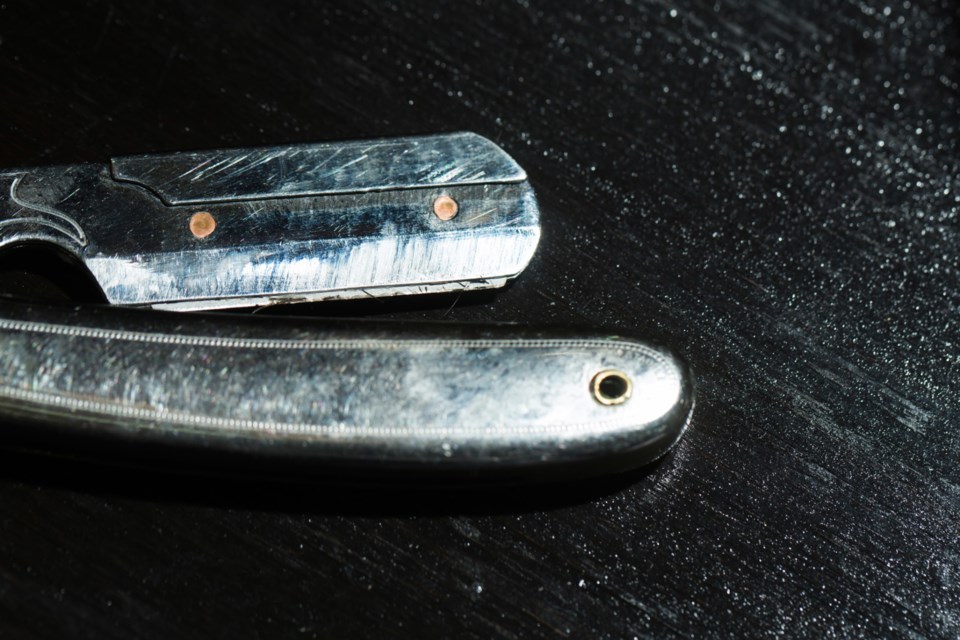From the archives of the Sault Ste. Marie Public Library:
In 1951, shock rocked the Davey Home when it became the scene of a suspected murder.
The Davey Home had a long history in the area. Founded initially as the House of Refuge in 1914, it provided shelter and support to those specified under Ontario’s Houses of Refuge Act – including people without the financial means to support themselves as well as “feeble-minded persons not fit subjects for commitment to hospitals for the Insane, or to hospitals for idiots, but for whom special custodial care is necessary.”
Prior to the House of Refuge, people had few other facilities to choose from locally. Upon its opening in 1914, Premier William Hearst described how those without a way of supporting themselves resorted to staying “in the jails and hospitals.” Indeed, when the facility first opened, eight of the initial residents – or, as they called them at the time, “inmates” – actually had transferred over from the jail.
However, as time wore on, the House of Refuge began to evolve. The focus was increasingly placed on caring for an older clientele, and on “[making] more pleasant the thought of growing old.”
Under the guidance of Frank J. Davey, a new facility was built and dedicated in his honour in 1950. This would segregate inmates based on severity – those who were bedridden or senile would stay in the old house of refuge, but those who were “sane, healthy and able to move around” would move into the new facility.
In September of 1950, an estimated 1,200 people attended the opening ceremony for the new Davey Algoma Home for the Aged. In the Sault Star, attendees commented on the beauty of the building, including the dining room that looked “like a first class hotel” and the décor in the leisure activity rooms. Adjectives thrown around included “marvelous,” “wonderful,” and “beautiful.”
Less than six months later, however, the new Davey Home, a place the Globe and Mail described as “Canada’s newest and most modern” facility of the sort, became the site of something much more horrifying with the killing of one of the “inmates”.
In late February of 1951, most of the inmates had finished their lunch and were relaxing in the public areas when screams caught their attention. One man, an inmate in his early 60s by the name of James Cox, approached a bystander, holding his throat. He asked the bystander how badly he had been cut. He moved his hand to reveal a “wide slash bleeding profusely” on his neck.
The bystander, Welsley Rodgers, reacted in shock, which served to panic Cox. He “began to yell hysterically,” shouting for someone to call the police or a doctor. Holding his throat, he ran to his room, leaving a splatter of blood along the walls. Shortly after, he left his room again, made it as far as the hallway, moaned, and then collapsed. Within a couple of minutes, he was dead, lying in a pool of his own blood.
Near his body – in another room a mere 25 feet away – residents found the accused murderer. A fellow inmate, 58 year old Anthony Maki, was lying on the ground, bleeding from the face, clothing ripped, and a bloody straight razor found on him. After allegedly slashing Cox, Maki attempted to kill himself, badly slashing his own face and neck.
Maki was immediately brought to the General Hospital. While it was too late for Cox, Maki pulled through, defying doctors’ initial expectations. He was held “under heavy guard” at the hospital while the authorities determined what to do. Ultimately, they charged Maki with murder and attempted suicide.
There was no immediate motive. Cox was “well-liked” according to a Sault Star article. He had served in the First World War, and unofficially acted as the Davey Home’s barber. Maki also seemed to be well-liked, with people describing him as “quiet and friendly.” Even the superintendent of the Davey Home described Maki as “not too bad,” despite the present situation. One inmate described what a shock the whole event was, saying, “We can’t understand what went wrong.”
Maki did survive his self-inflicted injuries. He was transported from the hospital to the jail and, throughout March of 1951, made several court appearances, represented by defense lawyer George Majic. A doctor was brought in from the Davey Home to testify that Anthony Maki was mentally ill; with that testimony, he was held for up to 30 additional days, during which he would continue to be examined by doctors to determine his mental state. In April, he was admitted to hospital for further examination.
And that is where the newspaper articles trail off. It’s not clear whether Maki was declared mentally fit to stand trial, or what the outcome of any possible trial may have been. Regardless, it was a horrifying moment in the history of the institution that affected all of those involved.
Each week, the Sault Ste. Marie Public Library and its Archives provides SooToday readers with a glimpse of the city’s past.
Find out more of what the Public Library has to offer at www.ssmpl.ca and look for more Remember This? columns here
